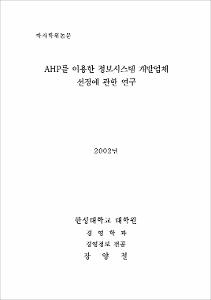AHP를 이용한 정보시스템 개발업체 선정에 관한 연구
= (A) study on the selection of information system developer using AHP
- Files in This Item:
-
-
Download
 000000066079.pdf
기타 데이터 / 5.59 MB / Adobe PDF
000000066079.pdf
기타 데이터 / 5.59 MB / Adobe PDF
-
Items in Repository are protected by copyright, with all rights reserved, unless otherwise indicated.